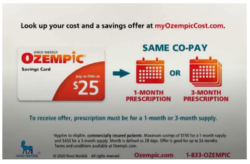Navigating Covid turbulence: How biopharmas are adapting their go-to-market strategies
Embracing digital channels and patient-centric strategies has been critical for commercial teams; a review of what some companies have done right
The Covid-19 pandemic has thrust the biopharmaceutical industry into unchartered territory. Unprecedented disruptions to the patient journey and in-person promotional efforts threaten patient health outcomes—as well as the performance of in-line and launch products to treat chronic and complex diseases.
The pandemic has curtailed the number of patient visits to healthcare providers, leading to declines in testing and screenings and slowing down disease diagnoses. Breast, colon and cervical cancer diagnoses reportedly declined by 94%, 86% and 94%,respectively, in March 2020 compared to historical averages from 2017-2019. This finding aligns with the 87%, 90% and 83% declines in mammograms, colonoscopies and pap smears, respectively, since February 2020. Similarly, prostate-specific antigen testing to detect prostate cancer decreased 60%, while CT scans for lung cancer decreased 39% since February.
Further, the pandemic has resulted in suboptimal patient treatment due to a slowdown in therapy starts and decrease in adherence to complex therapies. Some cancer patients skipped scheduled infusions to avoid contracting Covid-19, while others undergoing treatment received less intense chemotherapy and radiotherapy. Non-essential surgeries to remove newly detected tumors were delayed to ensure medical capacity for treating Covid-19 patients. The director of the US National Cancer Institute estimates that delayed diagnosis and sub-optimal treatment will increase the number of deaths from breast or colorectal cancer in the US by nearly 10,000 within the next decade.
The pandemic also forced physicians’ offices and hospitals across the nation to restrict biopharma sales rep visits from these facilities in efforts to ensure the safety of their patients and staff. Field teams, including the sales force, could no longer deliver in-person details to healthcare providers on a consistent basis to create sustainable disease and brand awareness. With limited in-person field force activity, biopharma commercial teams faced uphill battles establishing competitive differentiation and driving product uptake and growth. In the face of these challenges, leading biopharma firms experienced a slowdown in sales performance for products in select market segments. Some delayed launching innovative therapies, while others successfully launched new products by thinking outside the box and adopting creative strategies.
The lessons from these examples are clear. Faced with an ongoing pandemic—and uncertain environment—drug manufacturers should dial-up virtual selling and non-personal promotions where in-person sales calls have been dialed down, and implement patient-centric programs and solutions that support healthcare providers in delivering uninterrupted patient care. Let’s review what these companies did right.
Adopt patient-centric strategies
Biopharma companies responded to this unprecedented disruption in the patient care continuum by embracing patient-centric approaches to enable complex disease diagnosis, treatment initiation and compliance with prescribed therapy. They adapted to changes in patient care delivery and embraced approaches that require fewer in-office patient visits and lessen dependency on labs for testing and infusion centers for administering drugs.
As hospitals and physicians’ offices adopted telehealth programs to provide ongoing, routine care to their patients, some biopharma companies created digital “leave-behinds” for providers. Galderma, for example, provided digital educational materials for physicians to use during telehealth consultations with patients.
Some companies earned FDA approval for longer-lasting therapies that require less frequent administration. Merck increased the dosage for its breakthrough cancer immunotherapy, Keytruda, across all adult indications. With the higher dosage of 400 mg, patients could receive Keytruda infusions at the physician’s office every six weeks instead of every three weeks. This enables patients to stay more compliant with their cancer therapy while maintaining social distancing requirements. Additionally, Biogen is exploring extending interval dosing for Tysabri, a leading multiple sclerosis (MS) therapy currently infused in a physician’s office or hospital.
Other life sciences companies pursued in-home administration of some therapies—either self-administered or administered by a nurse. According to calls with investors, Ultragenyx asked payers to temporarily authorize in-home self-administration for Crysvita, which treats hypophosphatemia, in cases where in-home nurse administration is not feasible. Biogen is evaluating home infusions for Tysabri patients, where appropriate.
When launching its MS therapy, Zeposia, Bristol Myers Squibb eliminated many initiation hurdles for new patients. While patients must undergo multiple assessments before initiating Zeposia therapy, two out of three required assessments can be completed at home with a visiting nurse, in lieu of visiting a lab for blood work and a physician’s office for an electrocardiogram. By implementing these patient-centric strategies, life sciences companies ensure patients can initiate and continue treatment while minimizing visits to medical facilities.
Expand patient support and financial assistance programs
Biopharma manufacturers must also consider the financial impact of the pandemic on its patients. To help patients initiate and stay on therapy despite loss of insurance from Covid-19-related unemployment or heightened financial insecurities, some companies expanded patient support and patient assistance programs. These programs can lower out-of-pocket expenses for eligible patients and provide referrals to third-party foundations for financial assistance.
Merck enhanced its patient assistance program for patients losing coverage during the pandemic by providing help with expiring enrollments and offering new options for collecting signatures on enrollment forms. Merck also expanded its access program to temporarily offer eligible patients $0 co-pays for some products and relaxed refill restrictions for coupons.
BMS debuted Zeposia 360 Support™, a comprehensive patient support program that provides financial support for patients—including $0 co-pays for eligible patients, financial assistance options for patients without coverage and reimbursement for some medical costs associated with pre-initiation testing. For patients with private or commercial insurance experiencing delays in coverage, BMS offered a bridge program with a free 30-day supply, renewable for up to 24 months, to help patients quickly start and stay on Zeposia therapy while administrative issues are ironed out.
To raise awareness of these enhanced programs, commercial teams adopted new direct-to-consumer ad campaigns. AbbVie addressed “challenging times” and promoted financial assistance available to patients for its psoriasis treatment, Skyrizi. Similarly, Novo Nordisk and Sunovion promoted financial assistance programs in ads for their therapies (below).


Embrace virtual and digital non-personal channels
Biopharma companies expect new products—especially novel blockbuster therapies to treat cancer, neurological disorders and rare diseases—to drive top-line growth. They depend heavily on the sales team to build pre-launch disease awareness and post-launch brand awareness in order to drive rapid adoption of their launch products and accelerate growth of their in-line products. During the pandemic, when reps haven’t been able to visit physicians, commercial teams adopted creative go-to-market strategies to create and raise disease and brand awareness to achieve their sales forecast.
To educate patients and providers on its rare disease brands, Ultragenyx’s field team is conducting virtual speaker programs to educate patients and caregivers. It is also hosting national webinars for healthcare providers led by prominent thought leaders. The company is leveraging an expanded suite of digital tools to maintain close contact with healthcare providers. Other companies, such as Pfizer and GlaxoSmithKline, are using virtual tools to safety interact with health care providers.
Esperion Therapeutics launched Nexletol—the first of two FDA-approved lipid-lowering products—virtually as states were implementing Covid-19 shutdowns. It initially planned to deploy a 300-member sales team to meet in-person with as many target physicians as possible to build brand awareness. However, the company quickly pivoted to a digital strategy several weeks prior to launch. Using Zoom and Veeva Engage (below), the field team began hosting virtual meetings with physicians, ramping up from several hundred virtual meetings each week to a few thousand. Further, an unexpectedly large turnout to Esperion’s virtual speaker series on Nexlizet—the second launch product—led the company to launch the lipid-lowering combination therapy a month early, according to FiercePharma.

Get creative with product launch
- Pivot to virtual physician and patient promotions and access support: Eisai initially delayed launching its insomnia medication, Dayvigo, by nearly two months in response to Covid-19 disruption in physicians’ offices. Physicians, however, knew sleep was important amid the stresses of the pandemic and lockdowns—and encouraged the company to move forward with launch despite the crowded therapeutic market. Eisai shifted to virtual meetings and digital channels to communicate with physicians and created an online campaign, “Dayvigo Together,” to provide patients an option to chat live with nurse educators about Dayvigo being a viable treatment option for them. The company also established an electronic prior authorization support for physicians’ offices, in addition to offering a free trial and financial support for patients. Physicians could also “request a rep” via the Dayvigo website to proactively initiate a discussion with their sales rep.
- Deploy a virtual booth: On June 1, UroGen Pharma launched its first product, Jelmyto (right), to treat upper tract urothelial cancer (UTUC), the first non-surgical treatment approved for treating the rare disease. The commercial team kept all 48 sales reps and pivoted to virtual communications with physicians treating UTUC. The company also created an interactive online booth for the American Urological Association’s virtual Annual Meeting to help raise brand awareness among urologists.
- Optimize virtual workshops to capture future product demand:Aimmune Therapeutics looked to virtual workshops and web conferences to launch Palforzia, an oral immunotherapy for the mitigation of allergic reactions in children. Sales reps met virtually with allergists, payers and health system formularies to educate them about the product, and virtually distributed marketing information to allergists.
- Engage in social media promotion: Galderma launched Restylane Kysse, a lip filler, at the beginning of June. The company scheduled virtual meetings between sales reps and providers to build brand awareness. Galderma also provided content and graphics for aesthetics offices to post on their digital consumer channels (below).

The path forward
As biopharmaceutical companies continue to navigate the commercial challenges of the coronavirus pandemic, they must evolve their go-to-market strategies to reach and educate patients and physicians in new and creative ways. Whether launching a novel therapy or growing an in-line product, the time is now for commercial teams to embrace digital channels and patient-centric strategies in order to deftly navigate around the Covid-19 turbulence.
Even as the pandemic subsides and social distancing restrictions lift, companies that work closely with healthcare practitioners to put patients first will see lasting commercial success as they help patients receive quality healthcare and enjoy better clinical outcomes.
About the author

Janardhan Vellore is a vice president at Beghou Consulting. He has more than 15 years of experience in the healthcare industry and management consulting. He can be reached at [email protected].
Newron, Myung In Pharm Form Partnership Centered Around Treating Schizophrenia in South Korea
January 14th 2025The license agreement will feature an upcoming Phase III trial and—depending on results—the development, manufacturing, and commercialization of evenamide as a potential treatment option.
Newron, Myung In Pharm Form Partnership Centered Around Treating Schizophrenia in South Korea
January 14th 2025The license agreement will feature an upcoming Phase III trial and—depending on results—the development, manufacturing, and commercialization of evenamide as a potential treatment option.
485 Route 1 South,
Building F, Suite 210
Iselin, NJ 08830
All rights reserved.